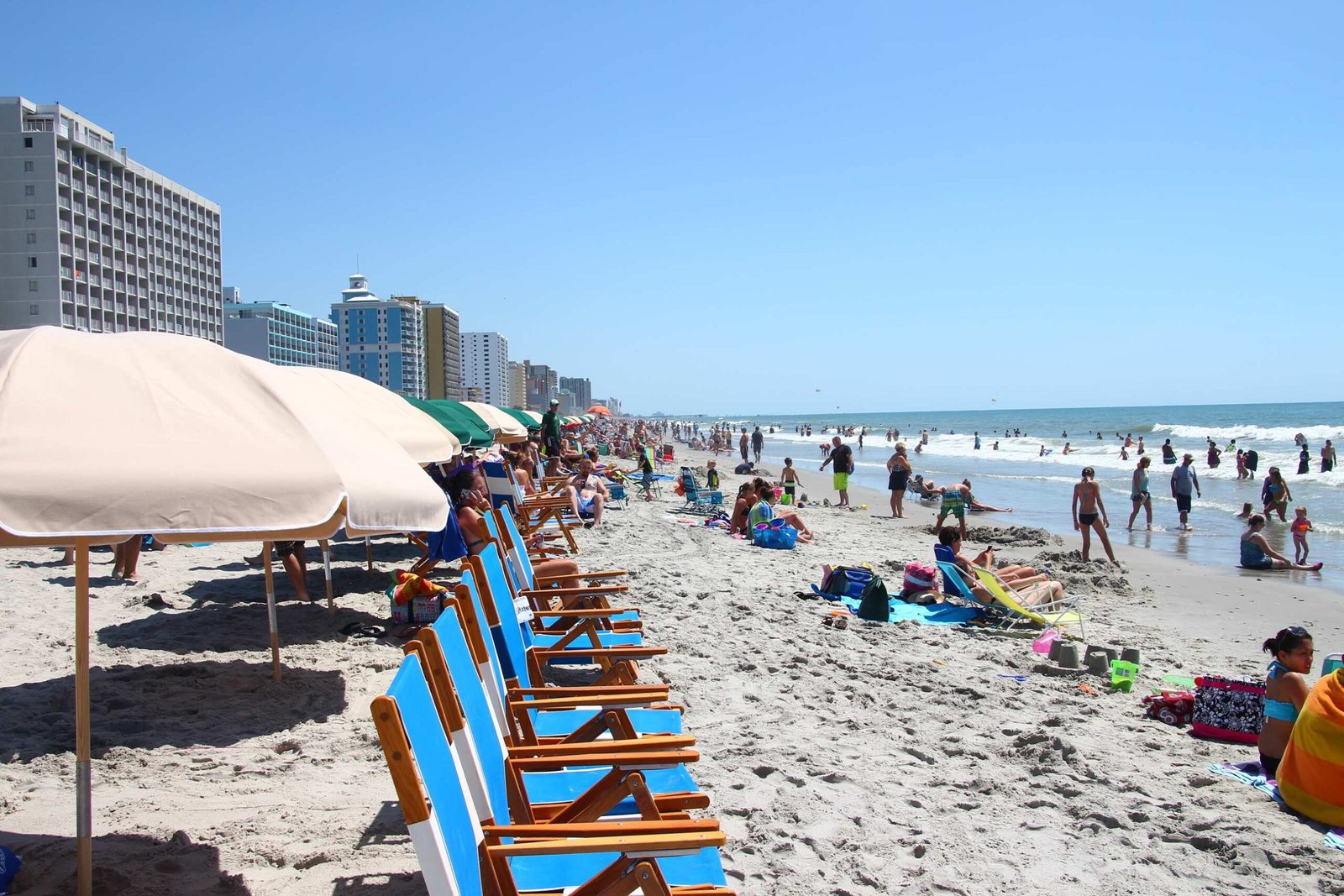Myrtle Beach’s coastal waters harbor an impressive array of shark species, with some reaching remarkable sizes that captivate marine enthusiasts and researchers alike. The region’s unique marine ecosystem supports diverse shark populations, including impressive predators that can grow to substantial lengths, making the area a fascinating destination for shark observation and understanding.
What Shark Species Dominate Myrtle Beach Waters?

Myrtle Beach hosts several significant shark species, each with unique characteristics and size ranges:
Spinner Sharks: Ocean’s Acrobatic Giants
- Maximum Length: Up to 9-10 feet
- Weight Range: 100-220 pounds
- Distinctive Behavior: Known for spectacular aerial spinning jumps during hunting
Bull Sharks: Aggressive Coastal Predators
- Maximum Length: 7-11.5 feet
- Weight Range: 200-500 pounds
- Unique Characteristic: Can survive in freshwater and saltwater environments
How Large Can Sharks Get in Myrtle Beach?

Loadmaster (David R. Tribble)
| Shark Species | Average Length | Maximum Recorded Length | Typical Habitat |
|---|---|---|---|
| Blacktip Sharks | 4-5 feet | 6.5 feet | Coastal Waters |
| Spinner Sharks | 6-7 feet | 9-10 feet | Near Shore |
| Bull Sharks | 7-8 feet | 11.5 feet | Inshore/Coastal |
Factors Influencing Shark Size in Myrtle Beach
Several environmental factors contribute to shark size and population:
- Water Temperature: Warm coastal waters support robust marine ecosystems
- Food Availability: Rich marine life provides excellent nutrition
- Breeding Conditions: Favorable coastal environments encourage healthy shark populations
Where Can Visitors Encounter Myrtle Beach Sharks?
Shark encounters in Myrtle Beach can occur through multiple experiences:
- Fishing Charters: Specialized tours like Harvest Moon Fishing Charters
- Marine Research Expeditions
- Guided Educational Programs
- Coastal Observation Points
Safety Recommendations for Shark Interactions
While shark encounters are rare, visitors should follow essential guidelines:
- Avoid swimming during dawn and dusk
- Stay in groups
- Avoid wearing shiny jewelry
- Maintain calm if a shark is spotted
- Report unusual marine activities to local authorities
What Makes Myrtle Beach a Unique Shark Habitat?
Myrtle Beach’s geographical location creates an ideal environment for diverse shark species:
- Warm Atlantic currents
- Abundant marine prey
- Complex underwater topography
- Minimal human interference in certain coastal zones
Conservation and Research Efforts
Local marine biologists and conservation groups continuously monitor shark populations, studying their behaviors, migration patterns, and ecological significance.
Expert Insights on Myrtle Beach Shark Populations
Marine researchers emphasize that while large sharks exist, they play crucial roles in maintaining marine ecosystem balance. The presence of various shark species indicates a healthy, thriving marine environment.
Recommended Shark Observation Techniques
- Use binoculars from safe distances
- Join professional marine tours
- Participate in educational programs
- Respect marine wildlife regulations
Conclusion
Myrtle Beach offers a fascinating glimpse into the world of marine predators, with shark species ranging from modest-sized Blacktips to impressive Spinner and Bull Sharks. Understanding and respecting these magnificent creatures ensures both human safety and marine conservation.
Reference:
– Harvest Moon Fishing Charters
– South Carolina Department of Natural Resources
– Marine Research Publications

